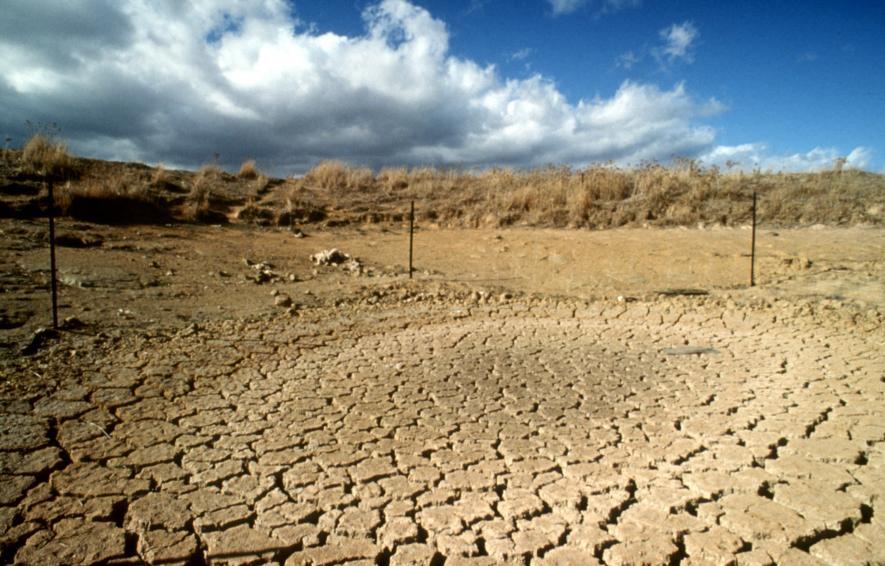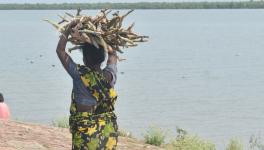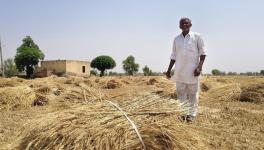Water Shortage Risk Looms as HKH Faces 23-Year-Low Snow Persistence for 3rd Year

Image Courtesy: Wikimedia Commons
Kathmandu/Patna: Even though climate change has been threatening water resources across the world, a latest scientific report has revealed that the Hindu Kush Himalaya (HKH) region experienced its third consecutive below-normal snow year in 2025. This
underscores a significant and growing threat to the water security of nearly two billion people dependent on the HKH's river systems.
Kathmandu-based International Centre for Integrated Mountain Development (ICIMOD), in its newly released Snow Update Report 2025, has highlighted that the HKH region experienced its third consecutive below-normal snow year in 2025, with snow persistence – the fraction of time snow on the ground after snowfall – hitting a vicennial record low of -23.6%. This is worrying news for the water security of nearly two billion people across 12 major river basins that originate high in the HKH. Snow persistence has plummeted to a 23-year record low, registering a staggering 23.6% below the long-term average.
According to the report, on an average, seasonal snowmelt contributes about a fourth of the total annual runoff of these rivers, with the share gradually rising from the rivers in the East to those in the West of the region. Despite such basin-wise differences in the dependency on seasonal snowmelt, continued deficit of seasonal meltwater, in general, means lesser river runoffs and early-summer water stress, especially for downstream communities, already reeling under premature and intensifying heat spells across the region.
Sher Muhammad, a remote sensing specialist at ICIMOD and the lead expert for the report, said: “We are observing such deficit situations occurring in continuous succession. This is an alarming trend. While our findings give a broad picture across the region, each must act based on the specific conditions of their river basins, particularly where seasonal snowmelt is the major water source."
ICIMOD’s Director General, Pema Gyamtsho, emphasised the need for proactive policy actions in building long-term resilience to exacerbating snow anomalies.
“Carbon emissions have already locked in an irreversible course of recurrent snow anomalies in the HKH. To tackle this regional snow crisis and the challenges it creates for long-term food, water and energy resilience, we urgently need to embrace a paradigm shift toward science-based, forward-looking policies and foster renewed regional cooperation for transboundary water management and emissions mitigation,” he said.
The report said the level of deficit in snow persistence in the western river basins this year has been less compared with last year. This provides no respite from the existing water stress in these areas. Seasonal snowmelt is critical for water supply in these basins. So, persisting below-normal snowfall and reduced melt rate will only worsen water availability.
On the other hand, the eastern river basins, which experienced near normal snow persistence last year, face deficits up to 50% below normal. Although seasonal snow contributes less to total meltwater here, around 15% drop in persistence of seasonal snow could still impact downstream communities, especially in the mountains and Tibetan Plateau, where annual snow conditions are generally erratic,” the report said.
The report reveals the most alarming declines in snow persistence in the Mekong (-51.9%) and Salween (-48.3%) basins, followed by the Tibetan Plateau (-29.1%), the Brahmaputra (-27.9%), Yangtze (-26.3%), and the Ganges (-24.1%) basins.
It pointed out that monitoring a 23-year timeseries (from 2003 to 2025) of basin-scale snow persistence during the snow season between November and March, shows recurrent seasonal deficits, coupled with severe yearly fluctuations. Moreso, over the past five years.
The report cites the example of the Yellow River Basin, which, from a high of +98.2% in 2008 to a low of -54.1% in 2023, continues facing deficits, albeit at -18.6% in 2025. Such sustained deficits strain agriculture, hydropower, and water availability. In 2025, the Mekong Basin saw a record low snow persistence of -51.9%, down from a peak of +80.3% in 2019. Severe fluctuations risk disrupting hydropower and agriculture.
The Ganges Basin recorded the highest snow persistence at +30.2% in 2015, but it dropped to a 23-year low of -24.1% in 2025. This would likely reduce flows in early summer, the report said.
Similarly, the Indus Basin, which recorded a high of +19.5% in 2020, experienced a steep drop in snow persistence to -24.5% in 2024, its vicennial lowest. In 2025, the basin recorded snow persistence anomaly at -16%. This sustained deficit threatens early summer water supply for nearly 300 million people, calling for urgent water management strategies, the report added.
In the Brahmaputra Basin, snow persistence peaked in 2019 at +27.7% but steadily dropped to -27.9% in 2025. This continued decline poses risks to hydropower generation and agriculture, especially in early summer, calling for integrated drought risk planning.
Snow persistence in the Tibetan Plateau plummeted from a +92.4% in 2022 to -29.1% in 2025. These extreme changes highlight the plateau’s climate sensitivity, the report said.
The report called for an immediate need for basin-level targeted actions toward adaptive water resource management for mitigating the forthcoming impact of water shortages on agriculture, hydropower generation, and other vital ecosystem services.
Investing in adaptive infrastructure, such as seasonal storage systems and enhancing efficient use of meltwater, developing national preparedness and response plans for negative snow anomaly and drought conditions, integrating snow anomaly information into national water strategies for hydropower, agriculture, and allied sectors, and disseminating snow anomaly statistics to strengthen evidence-based decision making and sectoral coordination, are some of the key action areas recommended by the report.
Get the latest reports & analysis with people's perspective on Protests, movements & deep analytical videos, discussions of the current affairs in your Telegram app. Subscribe to NewsClick's Telegram channel & get Real-Time updates on stories, as they get published on our website.
























